Four Tips That'll Help You Get The Most Out Of Your Plantar Fasciitis Night Splints
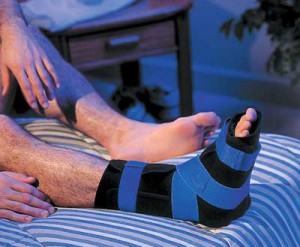
So, what's the low down on this treatment?
As those who struggle with plantar fasciitis are well aware, this is a painfull foot condition which is brought on by a series of minute damages to your main foot tendon. The tendon becomes inflamed, which causes a stabbing sensation near your heel bone, one that's often compared to a stone bruise. Since your feet are under extreme stress every single day, this is a type of injury which can take long to heal. Perhaps an entire lifetime if you don't take it seriously.
For this reason, it's a very good idea for a sufferer to try multi-pronged approaches to treating the condition. And many do. For this reason, plantar fascia splints remain a popular choice for many.
In order to make sure you're making the most of your night splint, remember to follow the simple steps below:
1. Get the right size
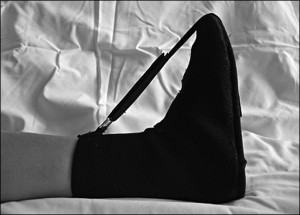
2. Properly adjust it to your foot and leg
Read the instructions that come with your night splint, making sure you adjust each of the straps in the correct manner. Excessively loose or tight straps will make your wearing your night splint a very uncomfortable experience. Consult your physician in case you need help with this.
3. Make sure to wear it regularly
In order for the night splint to work, obviously, you need to wear it. If you have a sedentary lifestyle, you may even wear one during the day. In fact, wearing your night splint during the day when you first get it is a good way of making sure that it is adjusted correctly.
4. Give it time
While night splints work at night, they surely do not work overnight. If your condition isn't particularly severe, it will take about two or three night for you to notice an improvement in your foot pain. Those in more critical condition will have to wear it for longer in order to notice a change.
Night splints are a very effective and pretty cost-effective method of treating your plantar fasciitis. Follow these tips correctly, and you're bound to love them and the relief they'll provide.
The Most Common Causes Of Plantar Fasciitis

Shoes that fit badly and excessive exercise are among the most common plantar fasciitis causes. Me and my next of kin have found this it out the hard way. Although I played around with the idea that the condition was hereditary, I ended up accepting the fact that it was basically a hundred percent my own responsibility. Fortunately, I visited a doctor early on, so it was easy to quickly start treatment for the condition. The pain I'd get in the morning was way too much to bear, so I really had to go and do something about it.
The pain tends to be worse in the morning, since the ligament in your feet swells up as you sleep. The first thing my doctor recommended was that I introduce a few light stretches into my daily routine, particularly when I wake up. This helps to loosen up the plantar fascia ligament, making your day one heck of a lot easier. Exercises may help to reduce pain, as well. The idea of this type of treatment is that it stretches the plantar fascia as you sleep, and I have found plenty of success with this. Lastly, I had to limit the activity on my feet and make sure I wore properly fitting shoes which protect and support the heel.
The Plantar Fasciitis Night Splint Provides Pain Relief
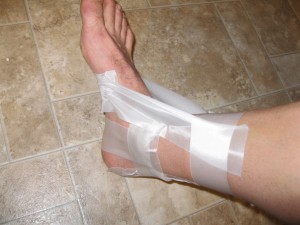
After the tearing has taken place, the patient will feel a hot sensation on their heel, in addition to severe pain. Also, the heel might appear red and swollen. The sock worn on the foot that is affected is usually rigid and is covered in pads so that it is comfortable to wear. You only wear it at night while you are sleeping since it has been designed to relieve you of whatever pain you may be experiencing so that you can get a good night's sleep. Approximately eighty percent of all patients who use it at night show marked improvement over the course of only one month. The heel is kept at a right angle by the night splints so that the foot doesn't make any unnecessary movements. At the same time it keeps the toes pointed up to stop the plantar from contracting. The foot's position makes healing of the torn ligaments possible and also reduces the amount of discomfort and pain that a patient feels.
The way the splint is made is so that it can gently stretch out the patient's plantar fascia without it causing the person any pain at all. A majority of patients who aren't assisted by plantar fasciitis night splints tend to take much longer to heal and in the morning experience more pain because after the person steps down on the ligaments that had started to heel overnight, they get torn once again because of the body weight that is exerted on them. This causes an unbearable, sharp pain. However, when the splint sock is used amount that the plantar fascia gets damaged is much less.
Resting and keeping one's foot off of the ground are critical elements in the foot's healing process. For people who need to walk around their homes, there is a special splint that you can wear during the day which will help to speed the healing process up. That is why it is among the best treatments to use on your foot. It will help to reduce the amount of pain that you feel throughout the healing process, and by the end, your foot will be completely healed.
A Little More On Plantar Fasciitis Night Splints
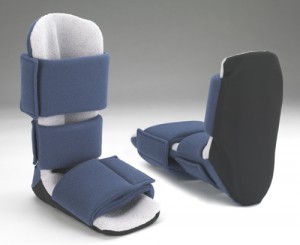
The first excruciating step from bed, which feels like a hot spike is being pounded through your heel. Previously there has been one way at least that people such as yourself has used and that is the plantar fasciitis night splint. You can only get so far with morning stretching. However, the complete night stretch offered by a splint has provided numerous individuals with the relief that they are searching for.
Of course, there isn't any real way of guaranteeing a night splint is going to be the ultimate treatment that will end all of your morning problems. However, numerous other individuals who have had runner's heel have praised the benefits they provide to minimize - or even completely resolve - that worst step you take each day. It is a sound concept (to keep the fascia ligament stretched out as you are sleeping), however it can be very cumbersome finding the best solution to solve your heel pain. Wearing a boot to bed? Talk about an inconvenient form of therapy. However, what if it actually worked for you?
Fortunately, there are numerous individuals just like yourself who have discovered that when they wear a foot boot to bed and leave it there all night, it enables them to get up out of bed in the morning and feel less pain progressively over the coming weeks.
You would of course need to stick with a set protocol, which might be quite difficult.
Benefits To Wearing Plantar Fasciitis Night Splints To Bed
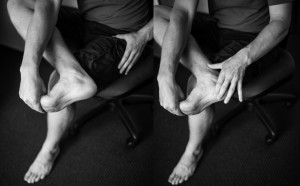
2. Sustains stretching to the Calf Muscles and Achilles tendon, which are believed to be involved in jogger's heel.
Of course, the drawback to having to wear a night splint, is the awkward effect it might have on some individuals. Some have compared it to having to wear a snow boot in bed.
However, those who are willing to follow protocol, give themselves the possibility of achieving definite improvement in their heel pain.
Different Kinds Of Night Splints
When it comes to splints to deal with plantar fasciitis, there are two main kinds - the boot and the dorsal. Visibly the difference is they are made on opposite sides of one's foot.
There is a hard plastic support on the Dorsal splint that rides on the top part of the foot and along the shin, to keep you foot firmly at a 90-degree angle, which leaves the arch and heel free to be able to breathe.
The Boot splint actually resembles a boot. The spine on the brace is located on the back of one's calf and leg and runs underneath your foot. Usually it is a larger sized brace compared to the dorsal style.
Dorsal Brace - Common Complaints
- The stretch is not held due to a design flaw causing foot slippage
- Added pressure placed on the toes can cause the toes to either fall asleep or tingle
- Sweating is caused by the larger straps
Boot Brace - Common Complaints
- Uncomfortable and large
- Toes go numb
- If you need to get up you can't walk in the braces
There doesn't appear to be a consensus on the kind of brace that is better. You will need to decide which one you are likely to benefit from the most.
Statistics And Group Studies

A randomized study was conducted for evaluating the effectiveness of a tension night split. There were 15 patients that had been assigned to the protocol of a Night Splint treatment that were cured or showed significant improvement to range of motion in the ankle and/or plantar fascial tenderness in 12.5 weeks on average. When the study was concluded, it was determined that wearing a tension night splint in combination with heel cushions, stretching and Ibuprofen, proved to be effective to treat policeman's heel.
The University of Pittsburgh performed a study, with three control groups comprised of 30 individuals each to determine the effectiveness of using either...
- only arch supports
- only night splints
- using both
... to treat plantar fasciitis. The conclusion was, that using both arch support and a night splint may be more effective then using either of them individually as just one treatment option.
A majority of studies performed over the past 15 years have resulted in favorable and similar reviews of the treatment option of the night splint, when used in combination with other types of orthotic support.
For more information, have a look at this wildly informative and useful Podiatry Today article!
Reviews Of The Top 6 Plantar Fasciitis Foot Braces and Splints
1. Swede-O Deluxe Padded Night Splint
The Swede-O Deluxe night splint provides plenty of padding to help prevent irritation from occurring while you sleep. This posterior boot brace is fully functional and is one of the most comfortable braces on the market.
This brace has many advantages, including being one of the most comfortable plantar fasciitis boots on the market. It delivers fast pain relief and offers an optional flex wedge to improve comfort and promote healing.
This brace also has several disadvantage. Because the boot is large and bulky, it can take time for the user to get used to wearing it. Walking is very difficult in this expensive boot. Finally, the Velcro used in the Swede-O Deluxe wears quickly.
2. Alpha Medical PF Night Splint
Alpha Medical's Night Splint uses engineering to help relieve runner's heel. The splint is lightweight and allows the foot to breathe. The padded straps are comfortable and are not as cumbersome as other jogger's heel devices. The design of this splint keeps your fascia stretched, resulting in little to no pain upon waking.
The Alpha Medical splint helps prevent morning pain. It offers comfortable padding, an optional wedge to support your toes and Velcro straps. The splint is available in multiple sizes and can fit both feet.
Alpha Medical's splint can cause the foot to become numb if it is not properly strapped. This can cause discomfort.
3. Futuro Plantar Fasciitis Sleep Support
Futuro offers dorsal style braces that are not as bulky as other plantar fasciitis boots and braces. This brace is made of soft foam and is breathable to help keep your foot cool and comfortable. The soft foam also holds the foot at a 90-degree angle while you are using it.
This brace is great for relieving morning heel pain. It can easily be put on and removed. This mall brace is perfect for travel and is much less bulky than boot style braces.
If the brace is not put on properly, your circulation can be cut off. The foot can also slip in the brace if not properly adjusted to ensure a proper fit.
4. Thermoskin Night Time Relief FXT
Thermoskin Relief is known as one of the most user-friendly and comfortable plantar fasciitis products on the market. The splint features a soft profile that is reminiscent of a comfortable sock. The splint does not bind and gently pulls the toes forward.
Thermoskin's night splint helps stretch the fascia ligament. The splint is small and less intrusive than other braces and larger socks. Users report it is very easy to use.
Users may experience discomfort while wearing this splint. The splint can cause sweating. Additionally, some users find that the brace pulls the toes back too far, which can be uncomfortable.
5. Bird and Cronin PF Night Splint
The splint by Brid and Cronin helps relieve morning plantar fasciitis pain. Its lightweight design features a slip-resistant sole. The splint keeps the foot stretched in the dorsiflexed position to help relieve pain.
The soft padding of the Bird and Cronin splint prevents irritation from extended usage. It is available in multiple sizes and can fit both feet. Users report relief of morning pain associated with PF.
If the straps on this splint are too tight it can cause numbing. Users often experience difficulty when wearing this brace. The uncomfortable brace can be difficult to sleep in.
6. Active Ankle DNS Dorsal Night Splint
The Active Ankle Splint's dorsal brace is less bulky and allows the feet to breathe. The brace holds the foot in a neutral position and provides morning heel pain relief.
The brace is non-irritating and provides sufficient cushioning. The reviews of this brace are a little better than that of the Futuro splint.
For optimal fit, the splint may need to be adjusted. If the splint is too tight, numbing may occur; however, if it is too loose, it may slip during sleep. This brace may not be the best for smaller feet.
The information located above will help you choose the best option for you. To best help relieve plantar fasciitis pain wear the appropriate night time brace or splint and use an orthotic insert throughout the day.
The reviews from this article include information from personal testimonies and group studies. Splints may help diminish or completely relieve heel pain caused by plantar fasciitis. Nighttime splints are often avoided; however, they can really help relieve pain and promote healing to the fascia.
Long story short: If you suffer from jogger's heel, use a brace or splint while you sleep and use a custom orthotic during the day.
Back to the Boot Bomb.
[toc]

0 comments